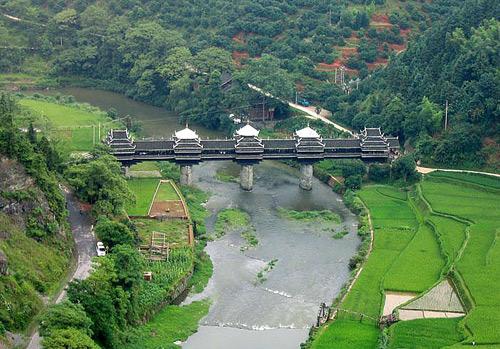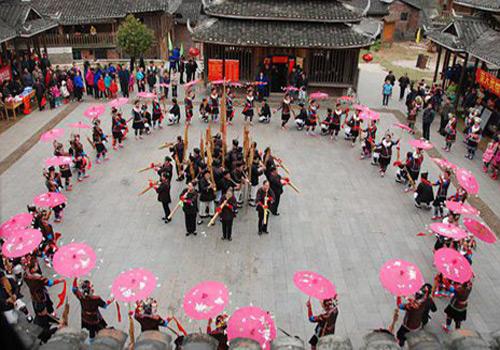Chengyang Wind and Rain Bridge
Chengyang Wind and Rain Bridge, which is also called Yongji Bridge or Panlong Bridge, is located about 20 kilometers north of Sanjiang County of Liuzhou City, Guangxi Zhuang Autonomous Region. Constructed in 1916, the bridge was made up of five big stone piers and a wooden upper body, 64.4 meters in length, 3.4 meters in width and 10.6 meters in height, enjoying equal fame with the stone-arch Zhaozhou Bridge and the iron-chain Luding Bridge in China.

As the most famous shelter bridge in Dong architectural style, the Chengyang Wind and Rain Bridge is under national protection and is treated as a must-see in Guangxi, where the Miao's festivals, the Zhuang's singing in antiphonal style, the Yao's dances and the Dong's construction are hailed as the "four great ethnic minority feelings in Guangxi".
Unfamiliar with modern bridges, the Chengyang Wind and Rain Bridge is like a long passage covered with handrail, roof and five traditional Chinese polygonal turriform pavilions, with elegant carvings and paintings on the pilasters. The whole bridge looks imposing; however, what really impresses people is that such a marvelous building was constructed without using a nail or a rivet!

Just as other shelter bridges in many places, not only does the Chengyang Wind and Rain Bridge functions as a traffic medium but also it was placed with religionary implication: the bridge is symbolized to be a flying dragon which can protect the village and bring a beatific life and a golden harvest. Sitting on the bench in the bridge, people can enjoy a pleasant view of the wriggling Linxi River, lush tea plants, fields and gardens.
